The Illawarra Hawks won an NBL title without exceeding the salary cap, in what was a fascinating season of spending from teams around the league.
A 'soft cap' is in place for teams to exceed the salary cap and pay a luxury tax -- which, theoretically, should increase their likelihood of winning -- but the Hawks didn't need it. The newly-crowned NBL Champions utilised the mechanisms afforded to all teams to make sure they didn't pay a cent in tax, staying under the cap en route to the franchise's first title in 24 years.
The total spends of each NBL team from the 2024-25 season -- distributed to all teams, obtained by ESPN, and confirmed by multiple sources -- showed the title-winning Hawks staying under the cap, three teams failing to reach the salary floor, and the Perth Wildcats nearly reaching a cash spend of $4 million.
As always, we've split this up into two categories: cash spend and cap spend.
The cash spend of each team is calculated after agent fees and non-cap exempt bonuses are paid. In order to achieve spends that are as close to the actual numbers as possible, the out-of-pocket value of each import was calculated by ESPN, using the real AUD-to-USD exchange rate instead of the league's fixed rate -- what the NBL uses to make its calculations -- while also taking into account teams covering Australia taxes and other incentives for those players. The aim was to calculate cash spends as approximate as the real numbers for each team, given the information provided.
For this exercise, we included an additional $100,000 to the cash spend of teams with Next Stars. The actual salary the teams paid for Next Stars players isn't known, so we've made their value uniform across the board for simplicity and consistency. The amount each team paid in luxury tax has been added to the cash spend totals.
The cap spends listed below are the exact values distributed across the league. Going into the 2024-25 season, the salary cap was set at $1,947,662.58. That number was exceeded by six teams: Melbourne United, the Adelaide 36ers, Perth Wildcats, South East Melbourne Phoenix, Tasmania JackJumpers, and Sydney Kings.
United had the highest luxury tax bill with $169,411, followed by the 36ers' tax bill of $155,949.62, and the Wildcats' $121,458.20. League wide, a total of $507,280.11 was paid in luxury tax. Teams now have the opportunity to apply for additional funds from that subsidy total.
Four teams remained under the cap: the Illawarra Hawks, New Zealand Breakers, Brisbane Bullets, and Cairns Taipans. The Taipans, Bullets, and Breakers all failed to reach the salary floor.
Below, we explain how each team reached their respective cash spend, as well as analyse the mechanisms used over the season to reduce cap spends.
TOTAL SPEND FOR 2024-25 NBL SEASON
ANALYSIS
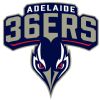
Adelaide 36ers
Just looking at their roster on its surface, the 36ers were always destined to be one of the highest spending teams in the NBL. The team went into the season with two players on marquee-level contracts, as well as three imports who the market would've regarded as reasonably expensive.
Isaac Humphries and Dejan Vasiljevic were both given a marquee designation at points during the season, but there were enough times where five combined imports and marquees played at once, so the team would've absorbed one of their Australian's prorated salaries during those games.
So, what ultimately adds up is: two marquee players that you can't marquee every game, three imports on considerable contracts, and Sunday Dech on the final season of a high-paying multiyear deal. Because of the inability to reduce the cap spend on most of those contracts, the season got quite expensive for the 36ers.
The team ended up 23.51% over the cap, with a luxury tax bill of $155,949.62. That led to us calculating a total cash spend of $3,435,428, which was second in the league.

Brisbane Bullets
Here's how substantial the Bullets' injury woes were: they negotiated a buyout with Shannon Scott and paid out a good portion of his contract... and still weren't able to reach the salary floor.
From a season-ending injury to Sam McDaniel early in the season, to Deng Adel being in and out of the lineup, and James Batemon going down midseason, the Bullets were ravaged with so many injuries that they weren't able to get up to the salary floor, finishing with a cap spend of $1,646,272; that's 15.47% under the cap.
Outside of the Batemon contract, the Bullets really didn't spend a heap on individual players this past season; though, it's worth noting Tyrell Harrison's new deal kicks in next season, as well as Casey Prather's, so the Bullets' 2025-26 books will look a lot different.
What ultimately added up with the Bullets' cash spend this season was the amount of players they had to bring in as injury replacements. Between Emmett Naar, Josh Adams, and suiting up development players, the Bullets' cash spend eventually reached a number we calculated to be $2,530,923, and they obviously had no luxury tax bill.
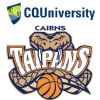
Cairns Taipans
Once again, the Taipans are at the bottom of both the cash and cap spend rankings.
There was a world where the team's cap spend may have drifted slightly higher, but the Taipans were another team that went through a horror injury run -- and particularly to their imports -- so they fell beneath the salary floor.
Around half of the team's cash spend was on its three imports -- Tanner Groves, Rob Edwards, and Pedro Bradshaw -- but injuries meant those bigger-money contracts didn't completely hit the cap.
The Taipans ended up 16.76% under the cap, with no luxury tax bill.
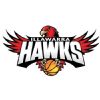
Illawarra Hawks
The upshot of any analysis of the Hawks is: they won the 2025 NBL Championship without going over the salary cap.
That's an impressive feat in its own right, but let's talk about how they managed it, especially because they were relatively healthy all season long.
The most obvious thing to point to is the utilisation of a few mechanisms the NBL has offered to teams. The entirety of Hyunjung Lee's contract was exempt from the cap because of the league's Special Restricted Player rule, while none of Will Hickey's salary hit the cap either, because of the Indigenous Player Rule. For next season, 50% of Hickey's salary will count toward the cap, while Lee's cap hit will remain at zero.
Timing also worked in the Hawks' favour here. Sam Froling was on the final season of a multiyear contract -- that number has jumped substantially with the new deal he's agreed to -- while Lachlan Olbrich was on the second season of his initial three-year deal. In effect, the Hawks got high-level contributions from players who were still on contracts they signed when they weren't as valuable.
A good portion of the Hawks' money went to their three imports, which is why their cash spend is still reasonably high -- we calculated it at $2,781,579 -- but both Trey Kell III and Darius Days missed time with injury, so that reduced their cap spend.
Because of all of those mechanisms, the Hawks' cap spend came in at $1,800,104.66, which was 7.58% under the cap.

Melbourne United
This United team was a fascinating case as one that had a heap of contracts they placed a marquee designation on -- a mechanism that should've substantially lowered their cap spend -- but they stayed largely healthy, so that cap number crept up anyway.
Chris Goulding, Matthew Dellavedova, and Jack White all had their contracts marqueed at points during the season, but no one really missed substantial time, clearing the way for a big tax bill. Because of their good health, and with two imports on the books, United finished 24.9% over the cap and ultimately had the highest tax bill of the season, paying $169,411 in equalisation money.
United was very local heavy, so their cash spend was naturally going to be quite high; teams can overpay locals because their contracts can be marqueed. After throwing their luxury tax bill on top of the players' salaries, United ended up as one of the four highest-spending teams, with our calculations putting their cash spend at $3,357,867.
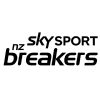
New Zealand Breakers
The Breakers joined the Bullets and Taipans as the three teams that weren't able to reach the salary floor this past season.
What's odd is that they could've gotten to the floor if they wanted to.
The reason their cap spend was so low ($1,688,690.31, which is 13.3% under the cap) was because they rolled with three imports -- it ended up being four -- who weren't relatively expensive (including Parker Jackson-Cartwright), as well as one marquee player in Jonah Bolden. Throw in injuries to Mojave King, Mitch McCarron, and Dane Pineau, and that cap number was naturally going to be reduced.
If the Breakers, however, decided not to put a marquee designation on Bolden's contract for just a few games, they would have gotten over the salary floor without coming close to exceeding the salary cap. At the end of the day, it doesn't really change outcomes, but it wouldn't have been difficult to do.
Paying multiple imports and a high-paying local in Bolden saw the Breakers' cash spend creep up to $2,418,812.
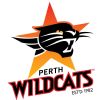
Perth Wildcats
According to our calculations, the Wildcats were ever so close to hitting the $4 million mark with their total cash spend.
That's what happens when you spend an anomalous amount of money on Bryce Cotton -- the amount is, of course, warranted -- and utilise all three import spots while still having two players you could theoretically marquee in Keanu Pinder and Tai Webster. Now, the Wildcats only ever used the marquee designation on Pinder -- cutting his cap hit by a third -- but other teams may have chosen to be more judicious with their spending on imports when they already have two players who could be given a marquee spot. The Wildcats, never afraid to spend, rolled with three imports anyway.
What's interesting is that big cash spend was with Cotton missing a chunk of the season with injury. The reigning MVP's cap hit ended up being just slightly over half of his salary. Kristian Doolittle, Dylan Windler, and Webster also missed periods of the season, so their effect on the cap was significantly reduced, which made their tax bill lower than what it theoretically could have been.
Another thing that helped the numbers add up was that the Wildcats had to pay what they still owed Todd Blanchfield this past season, so that hit both their cash and cap spends.
The Wildcats ended up 19.97% over the cap, for a luxury tax bill of $121,458.20.
Once we added that equalisation amount to their total spend, the Wildcats ended up as the clear-cut highest-spending team; 3,957,262, which was almost $400,000 over the team in second.
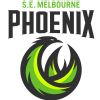
South East Melbourne Phoenix
The Phoenix hovered around the middle of the pack for both cash and cap spends this past season.
We'll start with their cap spend, which came in at $2,082,954.42 -- 6.95% over the cap -- where they got relief from being able to marquee Nathan Sobey's contract, as well as Derrick Walton Jr. missing significant time. Walton Jr.'s salary was more than halved on the cap because of his injuries.
The Phoenix's cash spend gets up there once you add up three highly-paid imports, and the contracts of both Sobey and Jordan Hunter; though, the remainder of Hunter's multiyear contract was renegotiated without an Asia-out, so that number will be substantially higher next season.
Once we add their $33,822.96 luxury tax bill, their cash spend came in at $3,005,981.
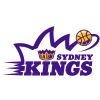
Sydney Kings
The Kings' decision to go quite local heavy led to them having among the biggest contrasts between their cash and cap spend.
Xavier Cooks' contract hit the million-dollar mark, but less than 25% of it landed on the cap because of the marquee rule. Bul Kuol was the Kings' other high-profile local signing, and his cap hit was effectively half of his salary. Add those raw cash numbers, along with an expensive import point guard in Jaylen Adams, and it's no surprise the Kings' cash spend ended up so high, with our calculations putting them at $3,533,379 on the season.
However, the Kings' ability to marquee key players, as well as some of the injuries they sustained -- Jaylin Galloway missed most of the season, while Keli Leaupepe was out for a decent amount of time -- meant their cap spend was significantly reduced.
Ultimately, the Kings ended up just 1.74% over the cap -- $1,981,497 -- with a luxury tax bill of $8,458.61.
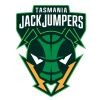
Tasmania JackJumpers
The JackJumpers were another team that finished right in the middle of the pack of both the cash and cap spend rankings.
The contracts of Milton Doyle, Will Magnay, and Jordon Crawford saw their cash spend rise, while the JackJumpers were a unique team with most of their ancillary players being well above the minimum, so that also led to that number seeing an uptick.
Magnay missed a good portion of the season, so his cap number was reduced -- he would've been a marquee anyway, so that's probably neither here nor there -- while injuries to Sean Macdonald and Majok Deng gave them some relief but nothing too substantial. The JackJumpers went through a midseason import swap, but that also didn't really affect their cash or cap spend; the outcome, purely from a spend perspective, ended up being what they would have had if they had adequately filled that Jack McVeigh spot to begin with.
By the end of the season, the JackJumpers were 3.73% over the cap, with a luxury tax bill of $18,179.64. We calculated their total cash spend at $2,824,577.
